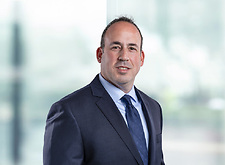Governor Cuomo Proposes Major Overhaul of Large-Scale Renewable Energy Project Permitting
On February 20, 2020, Governor Cuomo proposed the most significant overhaul of renewable energy project permitting since the enactment of Public Service Law Article 10. The Governor’s proposed “Accelerated Renewable Energy Growth and Community Benefit Act” (the Act), put forth as part of his annual budget, would effectively dismantle the State’s much-maligned Article 10 process, which required electricity generation projects of 25 megawatts (MWs) and larger to make their way through a multi-staged and multi-year permitting process before the New York State Board on Electric Generation Siting and the Environment (Siting Board). Five projects have been approved by that Siting Board, but the pipeline holds more than 50 projects. Recognizing that Article 10 is ill-fitted to help the state reach its ambitious renewable energy and climate targets set forth in the 2019 Climate Leadership and Community Protection Act (CLCPA), the Governor proposes in the Act to not only create entirely new permitting processes and the state entities to implement them, but also to invest significant state resources in the cause of getting large-scale project sites “build ready.”
Highlights include:
- Allowing large-scale renewable energy to avoid the arduous permitting process under Article 10 of the Public Service Law, in favor of a new, more streamlined process under Article 23 of the Economic Development Law
- Reducing the MW threshold of projects that may seek a permit at the State level, as opposed to through local zoning and a State Environmental Quality Review Act (SEQRA) process, from 25 MWs to 10 MWs
- Directing the New York State Energy and Research Development Authority (NYSERDA) to develop “build-ready sites” – including site control, interconnection and tax agreements – for the construction and operation of renewable energy facilities
- Requiring municipalities and industrial development agencies (IDAs) to consult with NYSERDA in setting payment in lieu of taxes (PILOT) amounts
- Providing a more uniform real property value assessment methodology for solar and wind projects
- Authorizing a power grid study and investment plans for distribution and transmission infrastructure needed to meet the CLCPA’s goals
- Amending Article 7 of the Public Service Law to allow for expedited regulatory review of major transmission utility projects
I. Article 23: A New Permitting Regime for Large-Scale Renewables
A. Project Eligibility and the Scope of the Office of Renewable Energy Siting’s Authority
Under the Act, renewable energy systems sized 25 MWs or more and any co-located energy storage systems are excluded from review under Article 10, effectively repealing the State’s current statewide permitting law for most non-fossil fuel facilities. Such eligible renewable energy systems are “solar thermal, photovoltaics, on land and offshore wind, hydroelectric, geothermal electric, geothermal ground source heat, tidal energy, wave energy, ocean thermal, and fuel cells which do not utilize a fossil fuel resource in the process of generating electricity.”[1] Standalone energy storage projects, i.e., those not paired with one of the above renewable energy technologies, would not be eligible.
Article 23 would be administered by a newly-created Office of Renewable Energy Siting (Office) situated within New York’s Department of Economic Development (DED). The Office “may undertake a coordinated and timely review of proposed major renewable energy facilities to meet the state’s renewable energy goals while ensuring the protection of the environment and consideration of all pertinent social, economic and environmental factors in the decision to permit such facilities.”
Projects with applications pending before the Article 10 Siting Board as of the effective date of the Act may opt-in to the Article 23 permitting process. Renewable energy systems that are 10 MWs to 25 MWs (not currently subject to Article 10 review, but rather within the purview of municipalities under local zoning and SEQRA) may also opt-in to the new Article 23 statewide process.
The Office will be charged with accepting applications for evaluating, issuing, amending, approving the assignment and/or transfer of and enforcing siting permits. In consultation with NYSERDA and other state agencies, the Office will create uniform standards and conditions designed to avoid or minimize any potential significant adverse environmental impacts. These standards will take into account the CLCPA targets and environmental benefits of the facility.
For impacts that cannot be addressed in accordance with such uniform standards and conditions, the Office will establish site-specific permit terms. Those terms may include a payment to the newly-created Endangered or Threatened Species Bank Fund in lieu of physical mitigation. Under the Act, the Department of Environmental Conservation (DEC) may use the monies in that fund “for the purposes of facilitating the achievement of a net conservation benefit to endangered or threatened species which may be impacted by the construction or operation of a major renewable energy facility.”
The DED will promulgate rules necessary to implement the Article 23 siting permit program. Until the DED establishes uniform standards and conditions, an application under Article 23 would be required to conform substantially to the form of an Article 10 application.
The Act further streamlines siting requirements for projects over 25 MWs, as well as 10 to 25 MW projects that opt in to the Article 23 siting process. No other state or local entity may, except as authorized by Article 23, “require any approval consent, permit, certificate, contract, agreement, or other condition for the development, design, construction, operation, or decommissioning” of a project for which an application has been filed under Article 23. For example, the Act could be read to, in effect, remove the Notice of Intent requirement in Agriculture and Markets Law (AML) § 305(4) for NYSERDA-supported projects. This provision has been interpreted by the Department of Agriculture and Markets to require that those projects, if located in a New York State agricultural district, undergo review by the Department of Agriculture and Markets to assess the impact of the project on the continuing viability of farm enterprises in the district, and provided the Department with the ability to request mitigation of any such requests. This provision of the Act may well consolidate any such review under the Permitting Office and pursuant to the new DED regulations.
B. Article 23’s Permitting Timeline
The Act contemplates a much faster timeline than Article 10, which requires, among other things, the submission of a Public Involvement Plan and a Preliminary Scoping Statement months before submitting a formal application. The Office would be required to issue a final decision within one year after the application is deemed complete. The deadline is six months if the facility is proposed to be sited on an existing or abandoned commercial use site, including brownfields, landfills, former commercial or industrial sites, and abandoned or otherwise under-utilized sites, as to be defined by future Article 23 regulations. If the Office fails to meet those deadlines, then the siting permit would be deemed to have been granted and “all uniform conditions or site specific permit conditions issued for public comment shall constitute enforceable provisions of the siting permit.” Aggrieved parties could seek judicial review 30 days after the grant or denial of the permit.
As the first step under Article 23, the Office would have to determine whether an application is complete within 60 days. Once deemed complete, the Office would have up to 60 days to submit the permit conditions for public comment. Municipalities that had received notice of the application would have to submit a statement on whether the facility is designed to operate in compliance with local laws and regulations. If a public comment (including a municipal comment) raises a “substantive and significant issue that requires adjudication,” the Act would require the DED to “promptly fix a date for hearing to hear arguments and consider evidence with respect thereto.” Applicants would be required to pay a $1000/MW application fee that would be disbursed to local agencies for their participation in the Article 23 public comment periods and/or hearing procedures. [2] Unlike Article 10, there is no intervenor fund for non-municipal parties interested in the project. After the end of the public comment period or hearing, the Office would issue a final siting permit with any necessary conditions.
C. Compliance with Local Law
Article 23 would strengthen the power to set aside all local laws so long as the municipality has been provided notice of the application. Though it must adjudicate any significant and substantive issues raised by municipalities, Article 23, unlike Article 10, appears to contain no affirmative requirement that the Office find the project complies with all applicable local law. Moreover, the Office “may elect not to apply, in whole or in part, any local law or ordinance which would otherwise be applicable if it finds that, as applied to the proposed major renewable energy facility, is unreasonably burdensome in view of the CLCPA targets and the environmental benefits of the proposed major renewable energy facility.”
This would be a significant shift from the “unreasonably burdensome” calculus of Article 10. The Siting Board, under Article 10, must find that a facility is designed to operate in compliance with local law in order to grant a permit, but may elect not to apply the local law if it finds it “unreasonably burdensome in view of the existing technology or the needs of or costs to ratepayers whether located inside or outside of such municipality.” [3] Article 23’s “unreasonably burdensome” standard, by contrast, is measured “in view of the CLCPA targets and the environmental benefits of the proposed major renewable energy facility” rather than existing technology or ratepayer costs.
II. Clean Energy Resources Development and Incentives Programs
The Act separately establishes a Clean Energy Resources Development and Incentives Program that empowers NYSERDA to work closely with the New York State Urban Development Corporation, “to foster and encourage the siting and development of major renewable energy facilities at appropriate locations throughout the state.” This entails locating sites that would be suitable for major renewable energy facilities and negotiating agreements with landowners to make those sites “build-ready.” Priority is to be given to brownfields, landfills, former commercial or industrial sites and abandoned or otherwise underutilized sites.
NYSERDA will take necessary steps to secure permits, property interests and agreements, and then establish a competitive process to transfer those rights to developers for the purpose of facilitating the development of major renewable energy facilities. NYSERDA may negotiate host community agreements with local communities and establish additional incentives to site renewable energy projects. Furthermore, NYSERDA may petition the Public Service Commission for funding to support these efforts for five years.
In a separate provision, the Act directs the Public Service Commission to “commence a proceeding to establish a program under which renewable owners would fund a program to provide a discount or credit on the utility bills of the utility’s customers in a renewable host community, or a compensatory or environmental benefit to such customers.” Renewable owners are owners of major renewable energy projects constructed after the date of the proposed law and who have received a NYSERDA renewable energy credits (REC) contract. The Long Island Power Authority (LIPA) is directed to establish a similar program in its territory to achieve the same objectives.
III. Taxation and Assessments of Renewable Energy Projects
The Act removes Real Property Tax Law § 487(9)(a)’s requirement that the taxing jurisdiction notify a developer of its intent to require a PILOT agreement within 60 days of having received notice. Instead, the jurisdictions must consult with NYSERDA in determining the annual payments to be required under such PILOT agreements. Theoretically, however, the removal of the 60-day period in which a taxing jurisdiction can require a PILOT means a PILOT could be required years into a project. And while consultation with NYSERDA is mandated, NYSERDA cannot oppose a jurisdiction’s demand for a full-tax PILOT – rendering the project potentially uneconomical.
The Act also settles the longstanding question with respect to what assessment methodologies should apply to solar or wind energy systems, which has often led to inconsistent methodologies across the State’s many taxing jurisdictions. Such values will be determined by an income capitalization or discounted cash flow approach that includes: (i) an appraisal model identified and published by the Department of Taxation and Finance and NYSERDA; and (ii) a discount rate published annually by the Department of Taxation and Finance and NYSERDA.
The Act also amends the definition of “Project” under General Municipal Law § 854 to include renewable energy projects and requires industrial development agencies to consult with NYSERDA in calculating PILOT payments for renewable energy projects. Also, an IDA’s written cost-benefit analysis must also include “the contribution of the project to the state’s renewable energy goals and emission reduction targets as set forth in the state energy plan[.]”
Aside from requiring consultation with NYSERDA, the Act does not appear to take away local or IDA authority to negotiate PILOT agreements for renewable energy projects.
IV. Distribution and Transmission Improvements
The Act directs the New York State Department of Public Service (DPS), in consultation with NYSERDA, the New York Power Authority, LIPA, the New York Independent Service Operator and utilities to undertake a "Power Grid Study" that is "a comprehensive study for the purpose of identifying distribution upgrades, local transmission upgrades and bulk transmission investments that are necessary or appropriate to facilitate the timely achievement of CLCPA targets."
It further directs the Commission, after the Power Grid Study is published, to commence a proceeding to establish a distribution and local transmission capital plan for identified upgrades, and “a bulk transmission system investment program that identifies bulk transmission investments that the commission determines are necessary or appropriate to achieve the CLCPA targets.”
The Act also contains significant revisions to Article 7 of the Public Service Law that governs the permitting of major utility transmission facilities. Under the Act, Article 7 applications are to be completed within 12 months from the date DPS deems the application complete. The Public Service Commission (PSC) may extend this deadline by six months to allow for an applicant to obtain necessary approvals and/or consents related to highway crossings or for other reasons deemed in the public interest. These deadlines can be waived by the applicant or tolled for settlement discussions. Significant amendments to an application prior to the commencement of a hearing may extend this deadline for no more than six months, unless waived by the applicant.
Furthermore, the Commission will promulgate regulations to establish an expedited process for major utility transmission facilities that “(i) would be constructed within existing rights of way, (ii) the [PSC] determines would not result in any significant adverse environmental impacts considering current uses and conditions existing at the site, or (iii) would necessitate expanding the existing rights-of-way but such expansion is only for the purpose of complying with law, regulations, or industry practices relating to electromagnetic fields.” The expedited process would take only nine months from a DPS determination of a complete application, subject to tolling for settlement discussions.
The Act also requires that the facility only “minimizes to the extent practicable” any significant adverse environmental impact or impact on active farming operations. This replaces the current provision of the law that requires the facility to “represent[] the minimum adverse [environmental] impact.”
V. What Comes Next and Reactions
The State’s annual budget bill is required to be enacted by April 1, and so negotiations regarding the Act are expected to be substantially complete by then. In the interim, interested parties will likely forcefully – and publicly – argue for and against certain provisions of the Act. On one hand, certain upstate communities and their representatives will no doubt criticize what they will perceive as a reduction of their control over large energy projects proposed for their communities. On the other hand, renewable energy project developers and environmental groups will argue in support given the struggles to get projects approved under Article 10 and the Act’s purpose of speeding project permitting and construction. Moreover, given the various components of the Act, it would not be surprising to see modifications to certain of those components, and even structural changes, as the legislative process plays out.
To learn more about the Accelerated Renewable Energy Growth and Community Benefit Act and how it may affect your business, please contact a member of Hodgson Russ’s Renewable Energy Practice at /practices-renewable-energy.html.
[1] The Act references the definition of “renewable energy systems” in PSL § 66-p.
[2] Non-disbursed intervenor funds paid under Article 10 will be refunded to the developer by the Department of Public Service and the Office shall address the appropriate treatment of such funds that have already disbursed.
[3] PSL § 168(3)(e).
Featured
- Partner
- Partner
- Partner
- Partner
- Partner
- Partner
- Partner
- Senior Associate
- Partner
- Co-Chair of the Firm, Partner
- Partner











